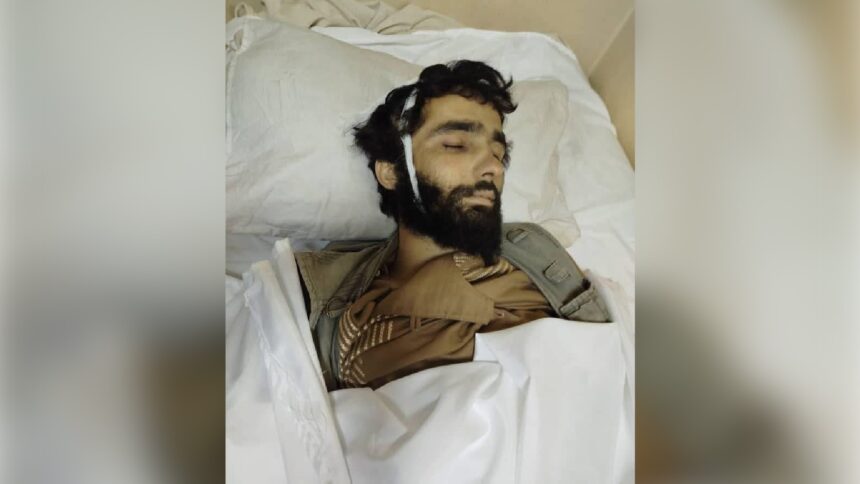RASC News Agency: A fresh episode of infighting within the Taliban has once again laid bare the group’s internal fractures and lack of unified command. In the city of Fayzabad, capital of Badakhshan province, a verbal altercation between Taliban members escalated into a fatal shooting, leaving one fighter dead and raising serious concerns about the growing volatility among the group’s armed factions. Local sources confirmed to RASC that the incident occurred on the morning of Sunday, June 1, after a heated dispute broke out between two Taliban militants over a seemingly trivial matter the call to morning prayers. What began as a religious disagreement quickly turned violent. One of the fighters, reportedly serving as the personal bodyguard to Mohammad Jawed Naser, the Chief of Staff of the Taliban’s 219th Military Corps, opened fire and killed his fellow comrade on the spot.
The slain fighter has been identified as Wathiq, a native of Farghamanj village in the Jurm district of Badakhshan. According to local residents, this village has recently been the site of growing tension between Taliban militants and civilians, especially following the group’s forceful destruction of local poppy fields a move that disrupted livelihoods and provoked widespread resentment. Earlier reports from the region indicated that during a similar operation, one civilian was killed and several others, including Taliban members, sustained injuries. The Taliban’s 219th Corps, to which the shooter is affiliated, is based near the Fayzabad airport. However, this latest violent episode raises urgent questions about discipline and coordination within the ranks of Taliban forces, who continue to operate with minimal oversight, opaque chains of command, and growing mistrust among themselves.
As expected, the Taliban leadership has refrained from issuing any formal statement regarding the shooting, a typical pattern in their ongoing attempts to conceal internal disorder and maintain an illusion of centralized control. But this silence only underscores the deepening cracks within the group, whose authority has increasingly come under strain from within. This incident is not isolated. In a similar episode on April 28, a Taliban cook opened fire at a checkpoint in Nangarhar province, killing three Taliban members. Such incidents are becoming disturbingly common, revealing not only the presence of undisciplined gunmen in Taliban ranks but also a culture of impunity and lawlessness that permeates the organization.
Observers note that these frequent internal clashes expose a more profound structural decay within the Taliban. As the group grapples with economic collapse, loss of international legitimacy, and widespread public dissatisfaction, it also faces growing dissent from within particularly among fighters disgruntled over unmet promises, ideological disagreements, and resource struggles. Analysts emphasize that while the Taliban continues to project the image of a monolithic Islamic regime, the reality on the ground is far more chaotic. Local power brokers, tribal militias, and poorly integrated fighters often operate according to personal agendas rather than a shared vision undermining the regime’s authority and contributing to instability across the country.
These escalating incidents of fratricide among Taliban members serve as grim reminders that Afghanistan, far from being stabilized under Taliban rule, is increasingly slipping into a new phase of armed lawlessness this time driven not by war between factions, but by implosion from within.






